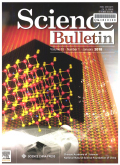- 钛学术文献服务平台 \
- 学术期刊 \
- 基础科学期刊 \
- 自然科学总论期刊 \
- 科学通报(英文版)期刊 \
Identification of noncoding RNA-encoded proteins on lipid droplets
Identification of noncoding RNA-encoded proteins on lipid droplets
基本信息来源于合作网站,原文需代理用户跳转至来源网站获取
摘要:
With the rapid development of high-throughput sequencing technologies, it has recently become evident that the eukaryotic genome is extensively transcribed [1,2].Large-scale projects for the systematic annotation and functional characterization of genes,such as GENCODE and FANTOM, have demonstrated that at least 80% of mammalian genomic DNA is actively transcribed.It has become increasingly clear that many genomic regions classified as noncoding actually harbor short open reading frames (sORFs) with fewer than 300 nucleotides, encoding small, functional proteins or micropeptides.These small proteins have evaded detection due to their small size, low abundance, instability, and loss during sample preparation [3].However, emerging experimental techniques, including ribosome profiling and mass spectrometry, along with computational advances have enabled their discovery and analysis [3,4].Most have been identified in prokaryotic organisms [4], but a growing number have also been discovered in eukaryotic organisms, including plants, zebrafish, insects, mice, and humans [2-4].These proteins have been found to play important roles in many fundamental biological processes [3] and have been reported to localize to cellular compartments such as mitochondria [5], late endosomes/lysosomes [6], and endoplasmic reticulum [7].However, given the large number of putative proteins encoded by noncoding RNAs, there is a need for much more investigation.In particular, there is a need for more information on the subcellular localization of these proteins, which may provide insight into their biological functions.

推荐文章
以Lipid A为靶点拮抗内毒素中药的筛选
内毒素
脂质A
生物传感器
中药
筛选
泛RNA:miRNA是RNA的“泛素”
小RNA
小分子RNA
泛RNA
泛素
泛素样蛋白
蛋白酶体
RNA干涉
RNA干涉
转录后基因沉默
小分子干涉RNA
依赖于RNA的RNA聚合酶
Identification of bacterial fossils in marine source rocks in South China
South China
Excellent marine source rocks
Bacterial fossil
Sedimentary environment
内容分析
关键词云
关键词热度
相关文献总数
(/次)
(/年)
引文网络
引文网络
二级参考文献 (74)
共引文献 (0)
参考文献 (25)
节点文献
引证文献 (0)
同被引文献 (0)
二级引证文献 (0)
1968(1)
- 参考文献(0)
- 二级参考文献(1)
1973(1)
- 参考文献(0)
- 二级参考文献(1)
1994(1)
- 参考文献(1)
- 二级参考文献(0)
1996(1)
- 参考文献(1)
- 二级参考文献(0)
1999(1)
- 参考文献(0)
- 二级参考文献(1)
2001(1)
- 参考文献(0)
- 二级参考文献(1)
2002(3)
- 参考文献(0)
- 二级参考文献(3)
2003(1)
- 参考文献(0)
- 二级参考文献(1)
2004(1)
- 参考文献(0)
- 二级参考文献(1)
2005(4)
- 参考文献(0)
- 二级参考文献(4)
2006(8)
- 参考文献(3)
- 二级参考文献(5)
2007(5)
- 参考文献(0)
- 二级参考文献(5)
2008(2)
- 参考文献(0)
- 二级参考文献(2)
2009(4)
- 参考文献(2)
- 二级参考文献(2)
2010(2)
- 参考文献(0)
- 二级参考文献(2)
2011(6)
- 参考文献(3)
- 二级参考文献(3)
2012(8)
- 参考文献(1)
- 二级参考文献(7)
2013(8)
- 参考文献(1)
- 二级参考文献(7)
2014(8)
- 参考文献(0)
- 二级参考文献(8)
2015(14)
- 参考文献(4)
- 二级参考文献(10)
2016(6)
- 参考文献(0)
- 二级参考文献(6)
2017(7)
- 参考文献(3)
- 二级参考文献(4)
2018(3)
- 参考文献(3)
- 二级参考文献(0)
2019(3)
- 参考文献(3)
- 二级参考文献(0)
2021(0)
- 参考文献(0)
- 二级参考文献(0)
- 引证文献(0)
- 二级引证文献(0)
引文网络交叉学科
相关学者/机构
期刊影响力
科学通报(英文版)
主办单位:
中国科学院
出版周期:
半月刊
ISSN:
1001-6538
CN:
11-1785/N
开本:
大16开
出版地:
北京东黄城根北街16号
邮发代号:
2-177
创刊时间:
1950
语种:
eng
出版文献量(篇)
9507
总下载数(次)
1
总被引数(次)
58070
期刊文献
相关文献
推荐文献
- 期刊分类
- 期刊(年)
- 期刊(期)
- 期刊推荐
力学
化学
地球物理学
地质学
基础科学综合
大学学报
天文学
天文学、地球科学
数学
气象学
海洋学
物理学
生物学
生物科学
自然地理学和测绘学
自然科学总论
自然科学理论与方法
资源科学
非线性科学与系统科学
科学通报(英文版)2022
科学通报(英文版)2021
科学通报(英文版)2020
科学通报(英文版)2019
科学通报(英文版)2018
科学通报(英文版)2017
科学通报(英文版)2016
科学通报(英文版)2015
科学通报(英文版)2013
科学通报(英文版)2012
科学通报(英文版)2011
科学通报(英文版)2010
科学通报(英文版)2009
科学通报(英文版)2008
科学通报(英文版)2007
科学通报(英文版)2006
科学通报(英文版)2005
科学通报(英文版)2004
科学通报(英文版)2003
科学通报(英文版)2002
科学通报(英文版)2001
科学通报(英文版)2000
科学通报(英文版)2021年第9期
科学通报(英文版)2021年第8期
科学通报(英文版)2021年第7期
科学通报(英文版)2021年第6期
科学通报(英文版)2021年第5期
科学通报(英文版)2021年第4期
科学通报(英文版)2021年第3期
科学通报(英文版)2021年第24期
科学通报(英文版)2021年第2期
科学通报(英文版)2021年第18期
科学通报(英文版)2021年第17期
科学通报(英文版)2021年第16期
科学通报(英文版)2021年第15期
科学通报(英文版)2021年第14期
科学通报(英文版)2021年第13期
科学通报(英文版)2021年第12期
科学通报(英文版)2021年第11期
科学通报(英文版)2021年第10期
科学通报(英文版)2021年第1期

 免费查重
免费查重










